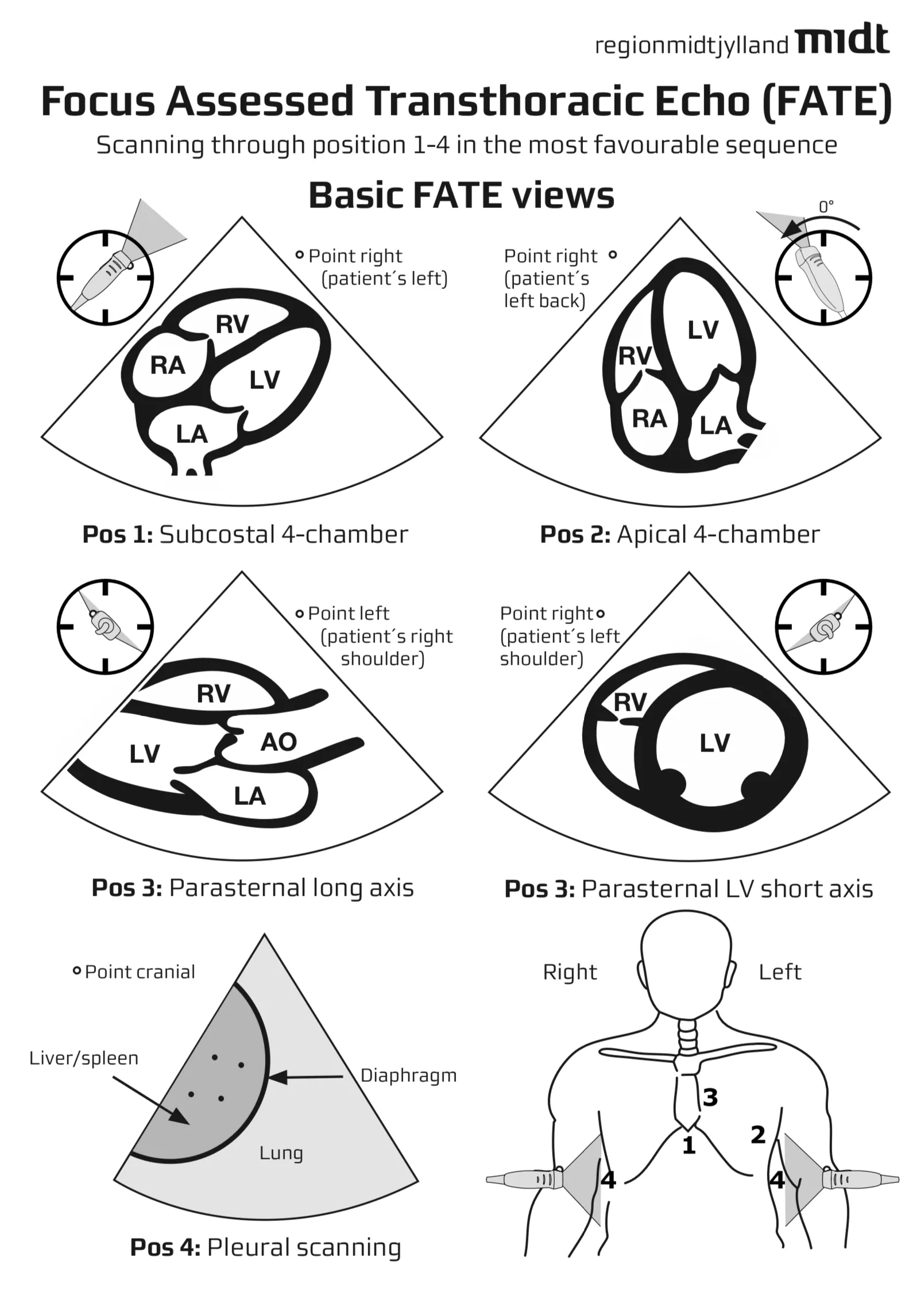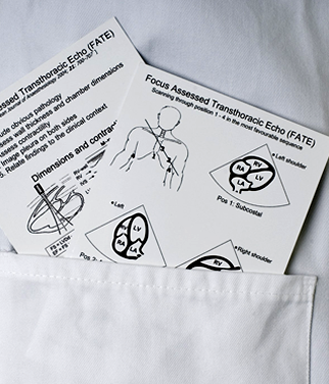Focused Cardiac Ultrasound (FATE)
Focused Cardiac Ultrasound (FATE)
Take this FATE – Basic Cardiac Ultrasound course and improve your patient care.
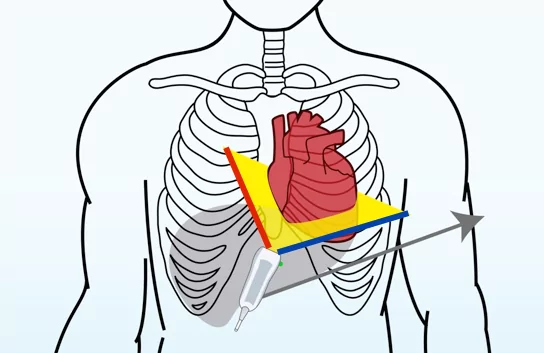
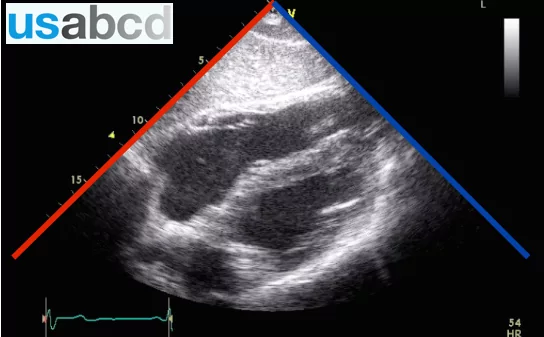
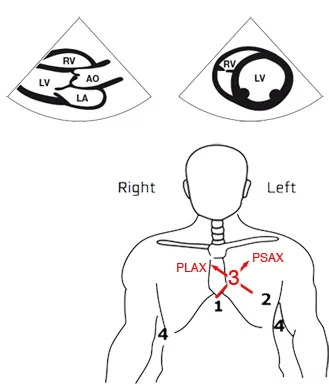
The FATE Cardiac Ultrasound Course – Focus Assessed Transthoracic Echocardiography (FATE) is the original focused cardiac ultrasound protocol practiced since 1989.
The FATE protocol is quick and easy to learn and can be applied in all clinical scenarios: the perioperative, the pre- and in-hospital, the intensive care and the emergency settings.
A free sample of the course – ‘Postion 1: The subcostal view’ can be viewed HERE
This is what you’ll learn:
- The normal sonographic features of heart and pleura
- How to obtain the 6 basic FATE views
- Eye-balling of right and left ventricular function
- M-mode for assessing cardiac dimensions and function
- The most important pathologies
- How to interpret the echocardiographic findings
These basic echocardiographic skills are useful for physicians who are not specialists of cardiology, e.g. anaesthesiologists, intensivists, emergency physicians, internal medicine physicians, surgeons, general practitioners. In fact, all healthcare professionals dealing with hemodynamic problems in their daily clinic can benefit from knowing the FATE protocol.
Please allow 6-8 hours to complete the e-course.
Your patients will benefit from your new knowledge because FATE:
- is quick and easy to perform
- can be performed in the sitting position and in any location
- is applicable in all clinical scenarios, e.g. pre- peri- and post-operatively, in intensive care, emergencies, resuscitation and so on.
Hands-on training
After completing the e-course you are ready to start getting experience in using the ultrasound machine. Completion is mandatory if you are going to attend a USabcd hands-on FATE – Basic Cardiac Ultrasound workshop. You can see all our hands-on courses in our workshop calendar.
The British Intensive Care Society has FICE approved the FATE protocol. Likewise, the FATE e-course covers the entire FOCUS curriculum. In other words, you can use the FATE – Basic Cardiac Ultrasound e-course as preparation for FICE, FOCUS and any other Point of Care cardiac ultrasound courses as it covers all learning objectives.
The FATE card
The FATE card is a pocket guide to obtaining the cardiac views. Learn more about it here.
The author
The author of the course is Prof. Erik Sloth, who invented the original focused cardiac ultrasound protocol practiced since 1989 (FATE = Focus Assessed Transthoracic Echocardiography).
Read more
- The FATE – Basic Cardiac Ultrasound e-course is built on the foundation of this article.
- Description on FATE-protocol on Wikipedia.
- Focus-Assessed Transthoracic Echocardiography: Implications in Perioperative and Intensive Care by Amarja Sachin Nagre in Annals of cardiac anaesthesia 22(3); Jul-Sep 2019.
- Focused Assessed Transthoracic Echo: Bedside Ultrasound/ Point of Care Ultrasound approach to the cardiac and pleural space examination. Dr. Liz Turner, Director of Bedside Ultrasound, UCLA.
- Focus Assessed Transthoracic Echocardiography (FATE) Courses at HSS. Dr. Stephen Haskins, Department of Anesthesiology at Hospital for Special Surgery offers annual point-of-care ultrasound/Basic focus assessed transthoracic echocardiography (FATE) courses for anesthesiologists around the country.
FATE course in other languages
We have the FATE course in other languages too – German, Spanish, Portuguese and Japanese. Use the links below to go to those courses.

